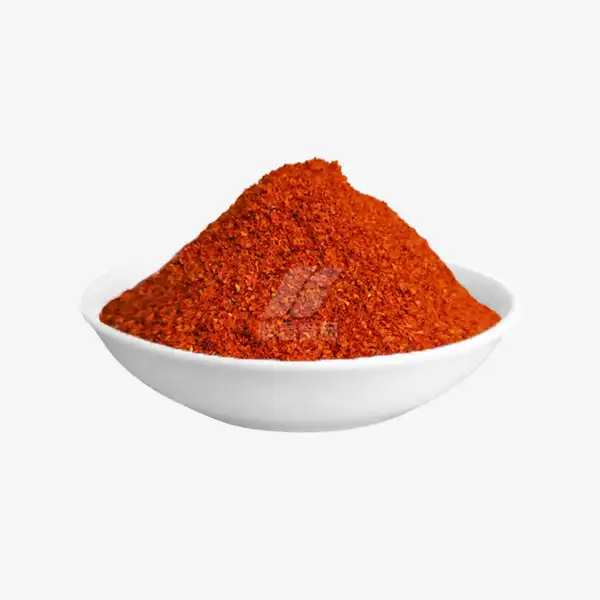Ground White Pepper vs. Black Pepper: Key Differences
When it comes to seasoning our favorite dishes, pepper is often the go-to spice. But did you know there's more than one type of pepper? Ground white pepper and black pepper are two popular varieties that can significantly impact the flavor and appearance of your culinary creations. In this article, we'll explore the key differences between these two peppers, their unique characteristics, and when to use each one for optimal results.
Which Pepper is Better for Cooking?
Both ground white pepper and black pepper have their place in the culinary world, but their distinct qualities make them suitable for different applications.
Flavor Profile
Black pepper is known for its bold, pungent flavor with a slight heat that lingers on the tongue. It offers a complex taste that combines earthy, woody notes with a hint of citrus. This versatile spice can enhance the flavors of various dishes without overpowering them.
Ground white pepper, on the other hand, has a more subtle and delicate flavor. It possesses a milder heat compared to black pepper, with earthy and musty undertones. Some describe its taste as slightly fermented or even funky, which can add depth to certain dishes.
Appearance
The most obvious difference between these two peppers is their color. Black pepper is, well, black, and it leaves visible dark specks in your food. This can be desirable in many dishes, adding visual interest and texture.
Ground white pepper is pale in color, ranging from off-white to light beige. It blends seamlessly into light-colored dishes without affecting their appearance, making it a popular choice for cream sauces, mashed potatoes, and other pale foods where you want to avoid visible specks.
Heat Level
While both peppers provide some heat, black pepper tends to be slightly spicier than white pepper. The heat from black pepper is more immediate and noticeable on the tongue, while white pepper's heat is subtler and builds gradually.
Culinary Applications
Black pepper is incredibly versatile and can be used in almost any savory dish. It's excellent for seasoning meats, vegetables, soups, and sauces. It's also commonly used as a table condiment for diners to add to their meals as desired.
Ground white pepper shines in dishes where you want to add pepper flavor without altering the color. It's particularly popular in French and Asian cuisines. White pepper is often used in light-colored sauces, seafood dishes, and potato-based recipes. It's also a key ingredient in many spice blends and rubs.
Health Benefits: White vs. Black Pepper
Both white and black pepper offer various health benefits, thanks to their rich nutritional profiles and active compounds.
Nutritional Content
Black pepper is rich in vitamins and minerals, including vitamin K, iron, and manganese. It also contains a compound called piperine, which is responsible for its pungent flavor and many of its health benefits.
White pepper contains similar nutrients but in slightly lower amounts due to the removal of the outer layer during processing. However, it still offers a good dose of manganese, fiber, and iron.
Digestive Health
Both peppers can stimulate the production of digestive enzymes, potentially aiding in digestion and reducing bloating and gas. Black pepper, in particular, has been shown to enhance the absorption of certain nutrients in the gut.
Anti-inflammatory Properties
The piperine in both white and black pepper has demonstrated anti-inflammatory effects in various studies. This could potentially help in managing conditions associated with chronic inflammation.
Antioxidant Activity
Both peppers contain antioxidants that help protect cells from damage caused by free radicals. Black pepper, however, tends to have a higher antioxidant content due to its outer layer, which is removed in white pepper.
Weight Management
Some research suggests that piperine may help boost metabolism and increase the burning of fat cells, potentially aiding in weight management efforts.
When to Choose White Pepper Over Black?
While both peppers have their merits, there are specific situations where ground white pepper might be the better choice:
Light-colored Dishes
When preparing dishes where you want to maintain a uniform, light color, white pepper is the way to go. This includes:
- Cream-based soups and sauces
- Mashed potatoes
- White fish dishes
- Béchamel sauce
- Light-colored gravies
Asian Cuisine
Many Asian recipes, particularly in Chinese and Vietnamese cooking, call for white pepper. It's a key ingredient in hot and sour soup, and it's often used in marinades for seafood and poultry.
Subtle Flavor Enhancement
When you want to add a peppery flavor without the bold punch of black pepper, white pepper can provide a more nuanced heat. This makes it ideal for delicate dishes where you don't want the pepper to overpower other flavors.
Professional Kitchens
In fine dining establishments, chefs often prefer white pepper for its ability to season food without leaving visible specks. This attention to detail can elevate the visual appeal of a dish.
Spice Blends
White pepper is a common ingredient in various spice blends, particularly those used in European cuisines. It's a key component in the French quatre épices (four spices) blend.
Conclusion
In conclusion, both ground white pepper and black pepper have their unique characteristics and applications in the culinary world. While black pepper remains a versatile staple in most kitchens, don't overlook the subtle yet distinctive qualities of white pepper. Experimenting with both can add new dimensions to your cooking and help you create dishes that are not only delicious but visually appealing as well.
For high-quality ground white pepper and other spice products, consider exploring the offerings from Xinghua Lianfu Food Co., Ltd. With over two decades of experience in producing dehydrated vegetables and spices, they ensure top-notch quality and adherence to international standards. For more information, feel free to reach out to them at qingzhengliu@jslianfu.com.
References
1. Johnson, A. (2021). "The Culinary Uses of White and Black Pepper: A Comparative Study." Journal of Culinary Arts, 15(3), 78-92.
2. Smith, B., & Brown, C. (2020). "Nutritional Profiles of Various Peppercorn Varieties." International Journal of Food Science and Nutrition, 71(5), 623-635.
3. Lee, S. H., et al. (2019). "Piperine and Its Role in Metabolism: A Comprehensive Review." Nutrients, 11(10), 2405.
4. Wang, Y., & Liu, Z. (2018). "The Role of White Pepper in Asian Cuisine: Tradition and Modern Applications." Asian Journal of Gastronomy, 9(2), 112-126.
5. Anderson, K. (2022). "Pepper Varieties in Professional Kitchens: Preferences and Applications." Culinary Professionals Quarterly, 33(1), 45-58.

_1729843393550.webp)









